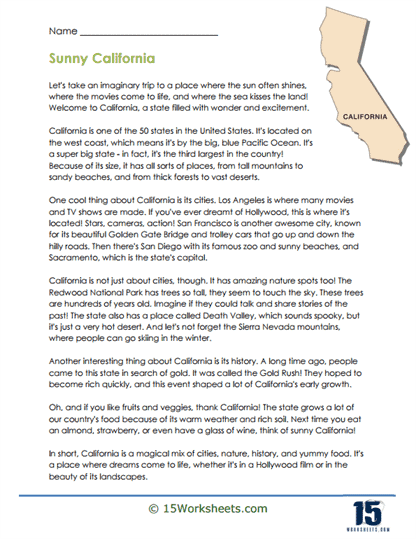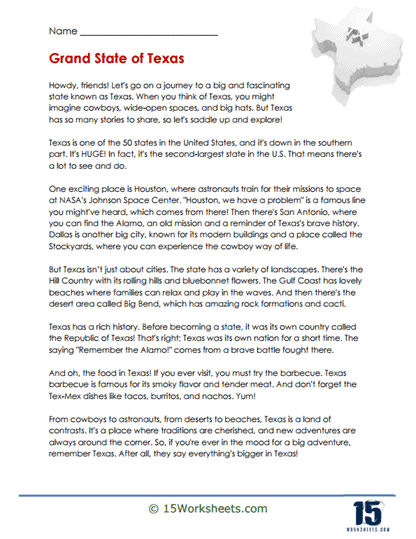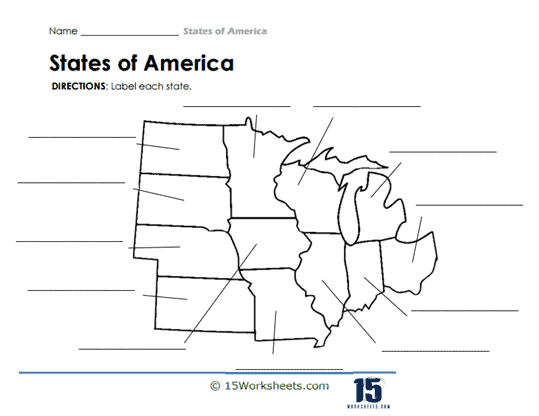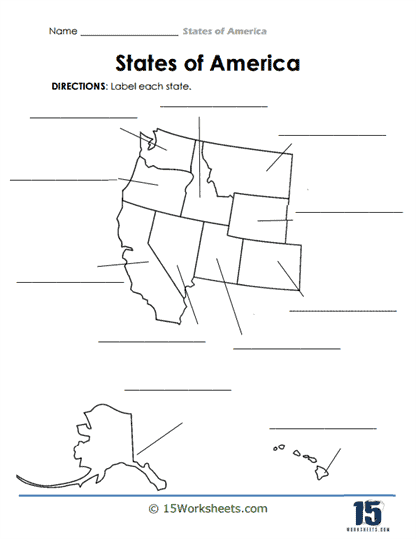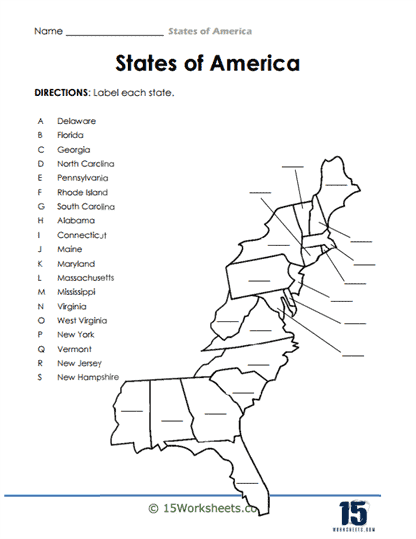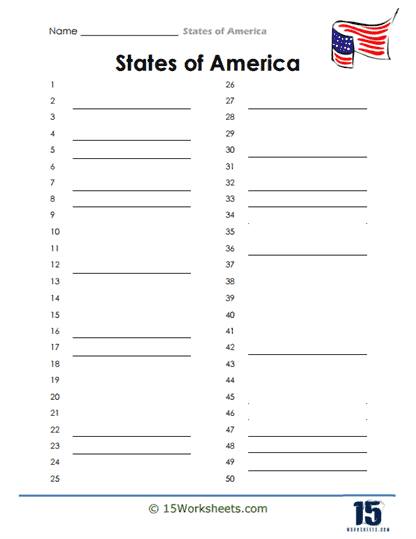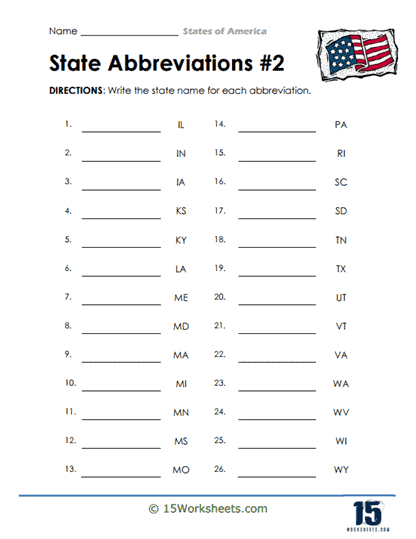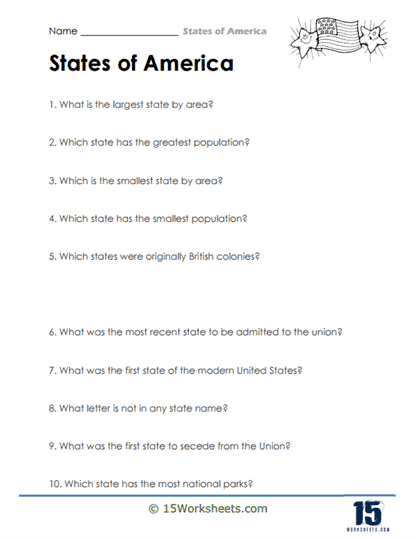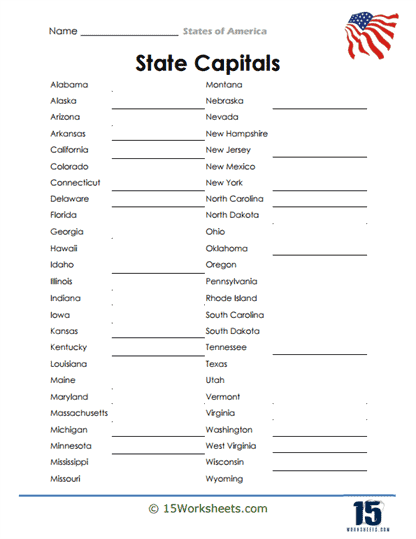States of America Worksheets
About These 15 Worksheets
This collection of worksheets offers students a comprehensive exploration of the United States of America, fostering a deeper understanding of the country’s geography, history, and culture.
Understanding the states of America is essential for students as it provides a foundational knowledge of the nation’s diverse regions, their unique characteristics, and the people who inhabit them.
Through engaging exercises and activities, students will gain valuable insights into the fifty states, their capitals, landmarks, and key historical events, enriching their knowledge of the nation they call home.
This resource not only enhances geographical literacy but also encourages critical thinking, research skills, and a sense of national pride, empowering students with a well-rounded perspective of their own country.
These worksheets encompass details regarding each U.S. state’s geography, history, significant landmarks, and cultural contributions. By delving into these worksheets, students embark on a virtual journey across the country, exploring the rich mosaic of environments, histories, and peoples that come together to form the United States.
The United States, with its vast and diverse landscape, is made up of 50 unique states, each contributing its own distinct cultural, historical, and geographical flavor to the nation’s tapestry. Understanding each state, its significance, and its relationship to the whole, is fundamental to grasping the broader story of America.
Types of Exercises On The Worksheets
State Identification on Maps – A foundational exercise, students might be asked to label each state on a blank map, familiarizing themselves with its location and shape. Students could match states with their respective capitals or significant cities, fostering geographical and civic awareness.
Historical Highlights – This might involve chronologically arranging key events in a state’s history or linking states with significant historical events or figures. Exercises might focus on identifying or matching state birds, flowers, flags, or mottos to their respective states.
Physical Geography – Students can explore the unique geographical features of states, such as mountains in Colorado, beaches in Florida, or deserts in Arizona. Students could compare and contrast different states based on various criteria, such as population density, size, historical events, or economic contributions.
Economic and Cultural Contributions – Worksheets may present data or facts about a state’s key industries, cultural festivals, or famous personalities, prompting students to associate states with their notable contributions. Engaging students’ curiosity, they might encounter interesting tidbits, like why Texas is called the Lone Star State or the origins of Hawaii’s Aloha spirit.
The Value of These Worksheets For Students
By studying individual states, students can appreciate the diversity of the U.S., promoting a sense of unity and mutual respect among its varied regions. An understanding of state locations, capitals, and significant geographical features is foundational to geographic literacy, enabling students to navigate and understand their nation’s layout.
Gaining insights into the industries, resources, and cultural contributions of each state equips students with a broader understanding of the nation’s socio-economic fabric. Every state has played a unique role in the nation’s history. Delving into these histories provides a richer, more nuanced understanding of the American story.
Understanding the roles and contributions of individual states fosters a sense of civic pride and responsibility. It encourages students to engage at both state and national levels. Learning about the festivals, music, literature, and art native to different states fosters a deep appreciation for the nation’s rich cultural mosaic.
Geographical and civic knowledge about states is not just academic; it’s practical. Whether traveling, voting, or making informed decisions, a knowledge of states aids in real-life scenarios.
From the rocky coasts of Maine to the sun-soaked beaches of California, from the industrial hubs of the Midwest to the agricultural plains of the South, the U.S. is a land of incredible diversity and potential. By familiarizing themselves with each state, students not only gain academic knowledge but also cultivate a deep-seated respect and appreciation for the myriad cultures, histories, and geographies that converge to form the United States.

